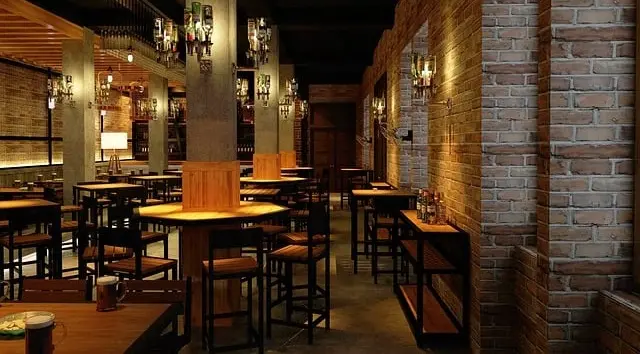
What is a Restaurant POS System?
A restaurant POS system is a comprehensive software and hardware solution designed to manage various aspects of a restaurant's operations. At its core, it processes sales transactions, but it also includes features such as inventory management, employee scheduling, and customer relationship management. The system typically includes a terminal for order entry, a cash register, receipt printers, and possibly mobile devices for tableside ordering. By integrating these functionalities, a POS system helps streamline operations and provide a seamless experience for both staff and customers.
Core Features of Restaurant POS Systems
Restaurant POS systems offer a range of features tailored to the needs of the food service industry. Key functionalities include order management, which allows servers to input and track orders in real-time; menu management, which enables easy updates and modifications to the digital menu; and inventory control, which tracks stock levels and alerts managers when supplies are low. Additional features often include table management for optimizing seating arrangements, customer management for loyalty programs and promotions, and reporting tools for analyzing sales data and performance metrics.
Benefits of Implementing a POS System
The implementation of a restaurant POS system brings numerous benefits that can significantly enhance operational efficiency. One of the primary advantages is improved accuracy in order processing, which reduces errors and ensures that customers receive exactly what they ordered. POS systems also streamline payment processing, including integration with various payment methods such as credit cards, mobile payments, and gift cards. Furthermore, the system provides valuable insights through detailed reporting and analytics, enabling restaurant managers to make data-driven decisions and optimize their operations.
Challenges in Adopting a POS System
While the benefits of a restaurant POS system are substantial, the adoption process can come with challenges. One common issue is the initial cost of purchasing and installing the system, which can be significant, especially for small or newly established restaurants. Additionally, staff training is essential to ensure that employees can effectively use the system, and the learning curve can impact productivity in the short term. Another challenge is integrating the POS system with existing technology, such as accounting software or reservation systems, which may require additional configuration and support.
Choosing the Right POS System
Selecting the right POS system for a restaurant involves evaluating various factors to ensure that the chosen system aligns with the specific needs and goals of the business. Considerations include the size and type of the restaurant, the complexity of the menu, and the level of customer service required. It is also important to assess the system's scalability to accommodate future growth, as well as its compatibility with other software and hardware. Additionally, evaluating the support and service options provided by the POS vendor can help ensure a smooth implementation and ongoing maintenance.
Integration with Other Systems
For a restaurant POS system to be most effective, it should integrate seamlessly with other systems and technologies used in the restaurant. Integration with accounting software allows for automated financial tracking and reporting, reducing manual data entry and errors. Connecting with reservation systems and online ordering platforms can streamline the management of bookings and takeout orders. Additionally, integrating with kitchen display systems (KDS) can improve communication between front-of-house and back-of-house staff, ensuring that orders are processed and fulfilled efficiently.
Enhancing Customer Experience with POS
A well-implemented POS system can significantly enhance the customer experience in a restaurant. Features such as tableside ordering and mobile payment options provide convenience and speed, leading to higher customer satisfaction. Loyalty programs and personalized promotions can be managed through the POS system, encouraging repeat business and fostering customer loyalty. Additionally, accurate and efficient order processing ensures that customers receive their food and drinks promptly, contributing to a positive dining experience.
Data Security and Compliance
Data security is a critical concern for restaurant POS systems, given the sensitive nature of customer and payment information. POS systems must comply with industry standards such as the Payment Card Industry Data Security Standard (PCI DSS) to protect against data breaches and fraud. Implementing robust security measures, including encryption, secure access controls, and regular system updates, is essential to safeguarding customer data. Ensuring compliance with data protection regulations helps maintain trust and confidence among customers.
Future Trends in Restaurant POS Systems
The field of restaurant POS systems is evolving rapidly, with several trends shaping the future of restaurant technology. One trend is the increased use of cloud-based POS systems, which offer greater flexibility and scalability compared to traditional on-premise solutions. Another trend is the integration of artificial intelligence (AI) and machine learning to enhance data analysis and predictive analytics, providing deeper insights into customer preferences and operational performance. Additionally, the rise of contactless payments and self-service kiosks reflects changing customer expectations and the demand for faster, more convenient service.
Conclusion: Embracing POS Technology
A restaurant POS system is a powerful tool that can transform the way a restaurant operates, offering benefits ranging from improved order accuracy to enhanced customer service. While the adoption of a POS system comes with challenges, careful planning and consideration can help overcome these obstacles and ensure a successful implementation. By embracing POS technology and staying informed about emerging trends, restaurants can optimize their operations, improve the customer experience, and position themselves for long-term success in an increasingly competitive industry.
